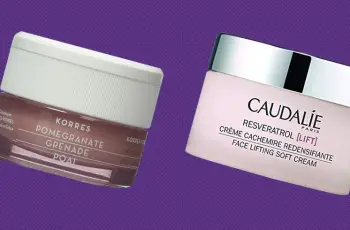
How to Layer Hyaluronic Acid and Vitamin C: The Complete Guide for Glowing, Hydrated Skin
You’ve discovered the right skincare products—now comes the part where you use them properly to get real, visible results from your daily routine without wasting a single drop.
Layering skincare can sound intimidating at first, but once you get the hang of it, it becomes second nature and incredibly rewarding for your skin’s health and appearance.
When it comes to layering hyaluronic acid and vitamin C, this dynamic duo can deliver amazing benefits—if you know how and when to apply each one correctly.
After reading this full guide, you’ll be able to confidently apply both ingredients and watch your skin transform with hydration, brightness, and a youthful glow.
Can You Use Vitamin C and Hyaluronic Acid Together? Absolutely!
Yes, these two powerhouse ingredients can be used together and are actually more effective when layered in the right order in your skincare routine.
Vitamin C is a potent antioxidant that protects skin from free radicals, boosts collagen production, and helps fade dark spots for a radiant, even skin tone.
Hyaluronic acid, on the other hand, is a humectant that pulls moisture into the skin and locks it in, helping your face stay hydrated, plump, and smooth all day long.
When you apply vitamin C first, it works to defend and brighten your skin, while hyaluronic acid follows up by sealing in moisture and supporting the skin barrier.
The result is a nourished, bouncy, healthy-looking complexion that feels just as good as it looks—even under makeup or in extreme weather.
Which Goes First—Vitamin C or Hyaluronic Acid?
When applying skincare, it’s best to layer your products from the thinnest to the thickest consistency to ensure proper absorption and maximum effectiveness.
Vitamin C serums are usually lighter and more watery, so they should be applied first, followed by hyaluronic acid serums or creams, which are typically more viscous.
This layering order helps vitamin C penetrate deeply into the skin first, while hyaluronic acid traps hydration and keeps all those active ingredients in place longer.
Vitamin C’s reputation for being unstable or irritating has greatly improved with modern formulations that are more skin-friendly, even for sensitive complexions.
After years of innovation, today’s vitamin C products are far less likely to cause irritation and are much more effective when used alongside hydrating companions.
Applying hyaluronic acid after vitamin C creates a well-rounded skincare step that not only treats the skin but also protects it from harsh environmental damage.
How to Use Hyaluronic Acid in Your Routine
Depending on the product, hyaluronic acid can appear in different steps of your routine—mainly as serums, moisturizers, or hybrid treatments like hydrating gels.
Here’s a simple, effective skincare routine using both hyaluronic acid and vitamin C, broken down into four essential steps to follow daily.
Step One – Cleanser:
Start with a gentle cleanser suited for your skin type to remove makeup, excess oil, sweat, and environmental grime that has accumulated throughout the day.
Whether you choose a gel, balm, or water-based cleanser, this first step ensures your skin is a clean canvas, ready to absorb the benefits of your next steps.
Step Two – Toner:
Using an exfoliating toner—especially those with AHAs like glycolic acid or lactic acid—can slough off dead skin cells and prep your skin for better ingredient absorption.
If you prefer a hydrating toner, that works too—just make sure it balances your skin’s pH and supports barrier function rather than stripping it.
Step Three – Serum:
This is where you’ll apply your vitamin C serum first, pressing it gently into clean, dry skin and allowing it to absorb for 30–60 seconds before continuing.
Once vitamin C is fully absorbed, layer on your hyaluronic acid serum while your skin is still slightly damp to maximize moisture retention.
This order ensures the brightening, protective powers of vitamin C are sealed in with a hydrating barrier that enhances results over time.
Step Four – Moisturizer:
Lock everything in with a nourishing moisturizer that may also contain hyaluronic acid for double the hydration and long-lasting skin barrier protection.
Your moisturizer will help seal in both your vitamin C and hyaluronic acid, allowing them to perform their functions without being evaporated or disrupted.
Do You Apply Hyaluronic Acid Before or After Moisturizer?
Hyaluronic acid can be applied both before and after your moisturizer depending on the product formulation and what type of hydration your skin currently needs.
Applying it before moisturizer helps attract water to your skin’s surface, while using it after can lock in previous layers and create a moisture-sealing barrier.
The great news is that hyaluronic acid is extremely versatile and will benefit your skin regardless of when it’s applied in your routine.
Which Is Better—Hyaluronic Acid or Vitamin C?
This isn’t a competition—it’s a skincare partnership, and both ingredients shine brightest when they work together on different layers of your skin.
Vitamin C brightens, protects, and fights free radical damage while evening out skin tone and supporting collagen production for firmer skin over time.
Hyaluronic acid deeply hydrates, soothes, and plumps the skin, making it look refreshed, radiant, and dewy no matter your age or skin type.
Because hyaluronic acid is found naturally in the body, it’s well-tolerated and works beautifully with most active ingredients, even on sensitive skin.
Combining both gives you a well-rounded skincare approach that covers hydration, antioxidant defense, and visible rejuvenation from morning till night.
What Should You Not Mix with Hyaluronic Acid?
Hyaluronic acid is one of the most skin-compatible ingredients available and is safe to use with nearly every other product in your skincare regimen.
However, always patch test new products before using them together, especially if they contain unfamiliar actives or if your skin is prone to sensitivity.
The issue usually isn’t with hyaluronic acid itself, but rather how it interacts with other ingredients in different product formulations or concentrations.
What Should You Not Mix with Vitamin C?
Vitamin C doesn’t play as nicely with every ingredient and can be unstable when mixed directly with certain acids or retinoids in the same application.
Avoid using vitamin C at the same time as retinol, glycolic acid, salicylic acid, or benzoyl peroxide, as they can cancel out each other’s effectiveness or cause irritation.
Instead, alternate them throughout the day—vitamin C in the morning for antioxidant protection, and retinol or exfoliants in the evening to renew your skin.
This staggered approach allows your skin to benefit from all active ingredients without overwhelming it, resulting in a smoother, clearer, more resilient complexion.
When layering vitamin C with hyaluronic acid, there’s no risk of conflict—in fact, hydration helps soothe and balance any dryness vitamin C may cause in sensitive skin.
Can You Use Too Much Hyaluronic Acid?
Yes, surprisingly, overusing hyaluronic acid—especially in dry or arid climates—can backfire if there’s not enough humidity for it to draw moisture from the air.
In such cases, it may begin pulling water from deeper layers of your skin, leading to dehydration, fine lines, and tightness if not followed by a proper moisturizer.
To prevent this, always apply hyaluronic acid to damp skin and follow it with a nourishing cream or lotion to seal in that hydration and protect your barrier.
Stick to the product’s recommended usage and remember that more isn’t always better—consistency and balance are the true keys to success in skincare.
Your Final Skincare Game Plan: Radiance and Hydration with Confidence
Layering vitamin C and hyaluronic acid doesn’t have to be complicated—in fact, it’s one of the easiest and most effective skincare routines you can adopt today.
Start with a clean base, apply vitamin C serum first, follow with hyaluronic acid while the skin is slightly damp, then seal it all in with a moisturizer.
Use vitamin C in the morning for environmental protection and radiance, and replenish your skin’s moisture throughout the day with the help of hyaluronic acid.
If you’re introducing these products for the first time, ease them into your routine and observe how your skin responds over the course of a few weeks.
With continued use, you’ll notice visibly brighter, smoother, and healthier-looking skin that feels just as incredible as it looks in the mirror.
Now that you’re an expert in layering these two skincare stars, your routine just got a whole lot smarter—and your glow-up is officially underway!


